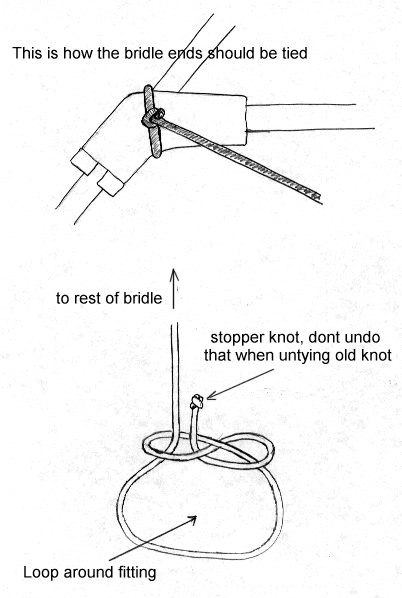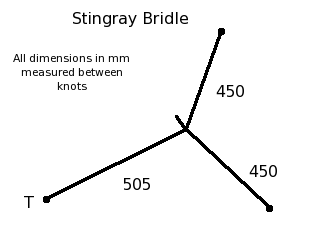
Stingray
|
|
|
| Menu |
|
Home
About News Kites Kite Design Kite Making - Construction - Plans - Acara - Ram - Manta - Stingray - Thornback - Gallery Contributed Skateboards To-do Links |
All I've done so far is copy the templates onto graph paper and scan them in (more time consuming than you think!) but if your that keen the scanned images are here until I get them drawn up properly.
Stingray (and Manta) 1 of 8
Stingray (and Manta) 2 of 8
Stingray (and Manta) 3 of 8
Stingray (and Manta) 4 of 8
Stingray (and Manta) 5 of 8
Stingray (and Manta) 6 of 8
Stingray (and Manta) 7 of 8
Stingray (and Manta) 8 of 8
Or... all joined in one huge file (right click and save-as)
Ignore the comment on the stingray plan about using standoff holes 1 and 6 - I've changed to a wide and low static bridle and now my favourite is with a standoff in the holes at each end, 1 and 10.
CAVEAT EMPTOR - READ BEFORE BUILDING
Before you rush out to invest a small fortune in ripstop and carbon you should be aware that this is a small, quick and fairly sensitive kite that you fly from the wrists with fairly small hand movements. It is designed to roll up quicklly and settle into a turtle easily. If you're looking for something big and slow or you like to fly your kites from the shoulder this not the kite for you!
Sail
I made my sail from PC31. Chikara would also be good for a higher wind kite since it has a little more stretch and excellent recovery so it soaks up gusts well.
I made this kite with overlapped taped seams using 3M tape and a serpentine stitch.
The trailing edge is finished with a 0.5 inch wide strip of Chikara, dacron between the spreaders and a leech line of 150lb Spectra.
The leading edge is tensioned with bungee cord
Framing
I framed my kite in 6mm Epsilon throughout which is cheap, fairly stiff and robust (provided the spar ends are plugged).
- The leading edge is 125cm in total, I cut mine into 2 pieces 60cm for the upper leading edge and 62.5cm for the lower
- The lower spreaders are 62.5cm each.
- I cut the spines to length on the kite but it is 75cm long with a nock on the tail end
- The top spreader is 388mm long but I recommend cutting it to lengthon the kite keeping it short enough not to deform the back of the sail
- All four stand-offs are 180mm long, 3mm carbon. This lenght is not inclusive of fittings. I recommend putting them in the outermost holes in the dacron patch shown on the plan as holes 1 and 10.
- I use Tradewinds fittings
Bridling
I used Tradewinds fittings and tied the bridle around the fitting. This has the advantage that it never slips or breaks free in high wind like a c-clip might.

The bridle is a simple 3 leg static bridle set wide and low

Weights
I add a small amount of weight to the tail end of the spine. In all but very heavy winds I use no more than perhaps 5g (in fact about 6 inches of soft solder). With this amount of weight the kite is well behaved in all moves and will do both 1 and 2 pop roll-ups. In more wind I've flown with 10g or 15g which make 2 pop roll-ups very quick but does impact on other tricks.
kitemaking/plans/stingray.html last modified 19:57:15 30-Jul-2017

This work is licensed under a Creative Commons Attribution-NonCommercial-ShareAlike 2.0 England & Wales License.